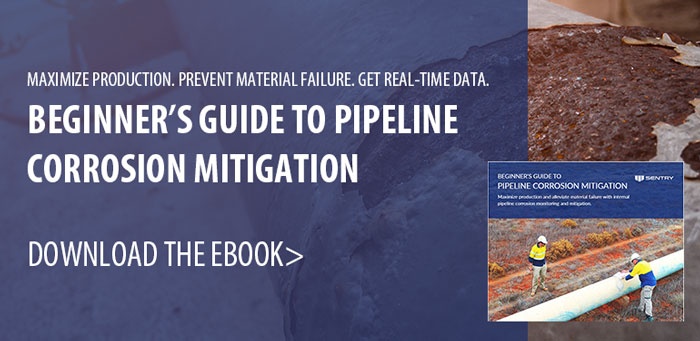
Corrosion is one of the biggest threats to the petroleum industry and preventing it is especially critical in systems susceptible to producing corrosive environments, such as flow lines, transportation pipelines, vessels, water systems, boilers, vacuum towers, cooling systems, amine systems and crude oil systems.
In order to mitigate this devastating occurrence, accurate measurement and monitoring is crucial.
Corrosion monitoring systems help asset integrity engineers and corrosion technicians maximize production as well as alleviate material failure in pipelines and processing equipment. The right measurement and monitoring system can help ensure engineering goals, operator safety and provide ease of use even in extreme high-pressure conditions.
three ways to monitor and measure pipeline corrosion
1. Corrosion Coupons
Corrosion coupons are one of the simplest ways to monitor corrosion, and the most commonly used method in gathering systems, pipelines, processing plants and facilities of all kinds. They come in three styles – flat, rod and disc – and provide accurate, quantitative estimates of corrosion rates within a system. Corrosion coupons deliver this through a clear visual signal of corrosion rate and type (after analysis in a laboratory) so plant operators can:
- Mitigate corrosion to reduce the likelihood of an asset failure
- Reduce maintenance expenses and downtime
- Extract data to quantitatively measure the life expectancy of materials
2. Ultrasonic Probes and Arrays
Ultrasonic (UT) is a group of monitoring techniques that use short, high-frequency ultrasonic waves to identify flaws in a material. By measuring these waves, the thickness of the material as a result of internal corrosion can be identified.
This technique is extremely sensitive and accurate for poor or non-continuous electrolyte environments, such as vapors, gases, soils, wet hydrocarbons and non-aqueous liquids. It scans over large surface areas to map the pipe or vessel thickness - accurately identifying internal corrosion.
The two types of UT equipment are:
- UT arrays - ultrasonic sensors wrapped around pipes and vessels to map the wall thicknesses, with an external data logger that energizes the transducers and logs the data.
- UT probes - a transducer measures the thickness of a replaceable weight loss coupon made of a similar metal or alloy as the pipe or vessel being monitored.
3. Corrosion Monitoring Probes
Similarly to Ultrasonic methods, Corrosion monitoring probes are used to continuously monitor corrosion within a system in real-time. There are two kinds of probes (extraneous to UT techniques):
- An electrical resistance (ER) probe measures both electrochemical and mechanical corrosion and is suited to corrosive environments with either poor or non-continuous electrolytes, similarly to Ultrasonic probes.
- A linear polarization resistance (LPR) probe measures only electrochemical corrosion and can only be used in aqueous solutions, providing almost instant measurement of the corrosion rate. This can allow an operator to evaluate changes or monitor the effectiveness of a chemical program and adjust quickly based on the probe readings.
Regardless of what corrosion monitoring and measuring method you choose, these systems will help reduce facility shutdown time, extend the life of your assets, and save significant costs.
Read Part II in this series to learn about the implications of location on these systems.
Sentry carries an extensive selection of corrosion monitoring products and services. Explore your options for upstream/midstream corrosion monitoring and chemical optimization solutions.




